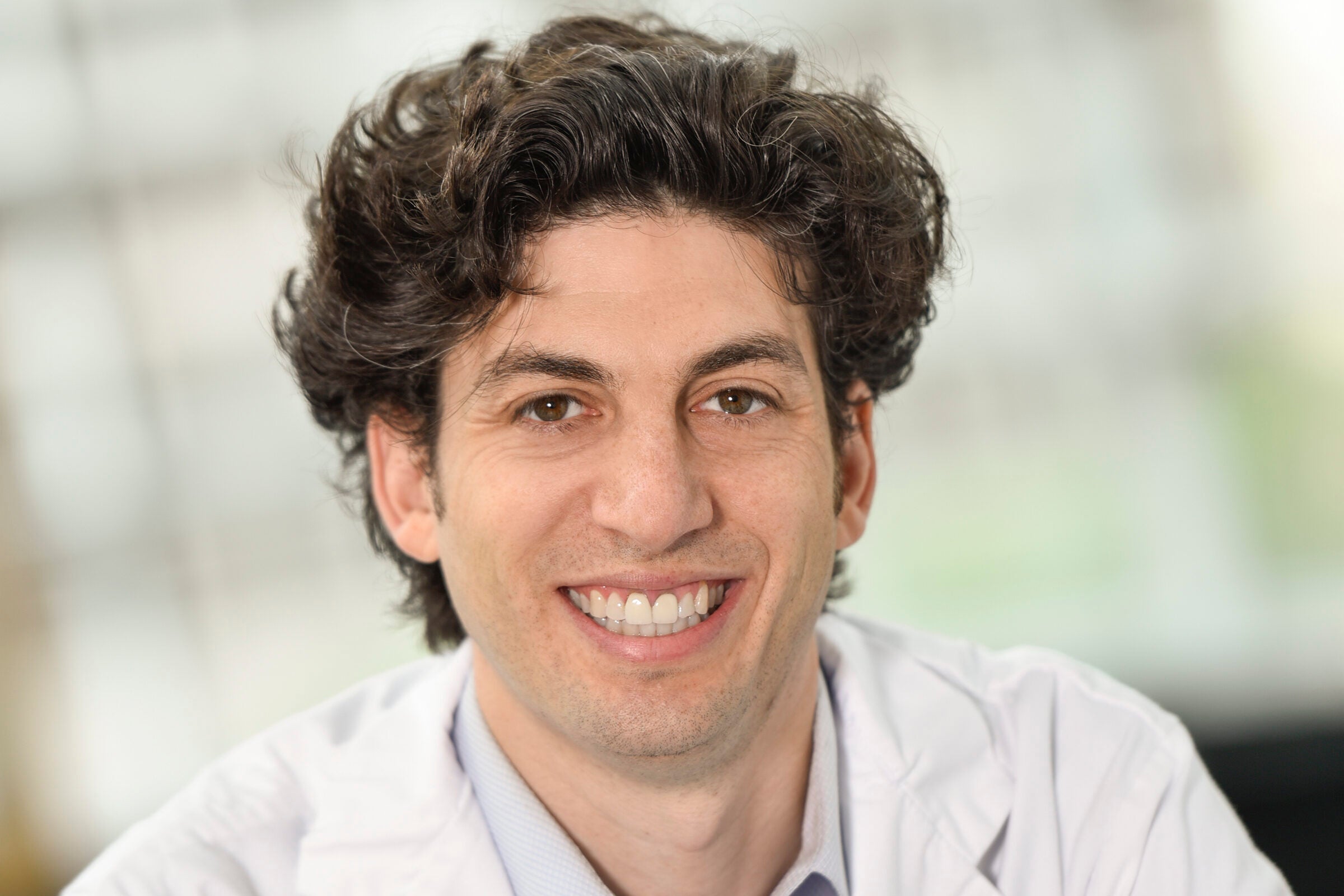Last month, GSK provided an early look at positive Phase IIb data that got the hepatitis B field excited. Results show that bepirovirsen could potentially lead to functional cure, which means that the candidate lowered hepatitis B surface antigen (HBsAg) to undetectable levels.
The Phase IIb data is a “major breakthrough,” says Dr Pietro Lampertico, professor of gastroenterology at the University of Milan. This is the first time in a decade whereby a new candidate was able to show lowered HBsAg to undetectable levels after weeks of treatment, Lampertico explains.
With GSK gearing to initiate a Phase III bepirovirsen trial in the first half of 2023, this is the first time an antisense oligonucleotide candidate would be investigated at this stage. It’s also been years since a new hepatitis B agent would be studied at Phase III, notes Dr Jordan Feld, senior scientist at Toronto General Hospital Research Institute.
As such, all eyes are on GSK on how it will design its forthcoming study, and if the asset’s efficacy profile sustains in the next development stage.
While there is initial positive Phase IIb data, more results from this study are needed. Experts say there are still questions about the candidate’s potential for durable efficacy, as well as concerns around liver inflammation. There are also doubts if bepirovirsen, by itself, would deliver functional cure for many.
Phase IIb hepatitis B data has caveats
GSK, formerly GlaxoSmithKline, presented positive interim analysis at this year’s EASL Liver Congress from the Phase IIb B-clear trial (NCT04449029) investigating bepirovirsen in treatment-naïve patients and ones already taking nucleotide analogues (NA). In the trial’s secondary endpoint, 28% of patients on NA (n=68) and 29% of treatment-naïve participants (n=70) experienced lowered HBsAg and hepatitis B virus (HBV) levels with 300mg bepirovirsen at the end of the 24-week treatment. NAs suppress HBV to undetectable levels but must be taken long term, if not indefinitely.

US Tariffs are shifting - will you react or anticipate?
Don’t let policy changes catch you off guard. Stay proactive with real-time data and expert analysis.
By GlobalDataFinal B-clear data is expected later this year. Phase IIb investigator Dr Man-Fung Yuen notes the asset’s potential for durable efficacy at 48 weeks after the first dose, which is the trial’s primary endpoint, will be a key efficacy indicator.

Bepirovirsen is likely to have some lingering efficacy impact after the therapy is stopped, notes Yuen, who is also a hepatology professor at the University of Hong Kong. “I would be comfortable to say that the sustained effects would last for at least six months after stopping the therapy,” he says.
In a Phase IIa trial (NCT03020745), declined HBsAg levels rebounded after two weeks but participants received a lower dose than in the Phase IIb. The best performing Phase IIa cohort in terms of durability was given the drug once weekly at 120mg for 12 weeks. In Phase IIb, the positive data was from patients given a 300mg weekly dose at 24 weeks.
Even if B-clear durability data is positive, it would still be too early for efficacy conclusions, says Dr Way-Kay Seto, clinical professor, School of Clinical Medicine, at the University of Hong Kong. The Phase IIb data is too small, he adds. While the Phase IIb had 457 patients, it had multiple arms investigating different doses.
There are also side-effect questions that need to be addressed. Phase IIb data shows an increase in alanine aminotransferase (ALT), which is a marker for liver inflammation. ALT flares can occur due to drug-induced injury or the immune system attacking the virus in the liver, Yuen explains. In the latter, the larger the HBsAg drop, the higher chance of an ALT flare, he adds. Regardless of what causes the flare, liver damage is still a risk, and thus patients need extensive monitoring, he notes.
A GSK spokesperson says, in the Phase IIb, treatment-related serious adverse events (AEs) were observed in less than 1% of patients receiving NA and 1% of treatment-naïve patients, with no clinically meaningful differences in AEs across treatment arms.
Forecasting Phase III design
GSK has not yet revealed its Phase III design. Because this is new territory in hepatitis B, the Phase III design will likely provide a blueprint on how other future trials will be set out, Seto notes.
What is public is that GSK will investigate bepirovirsen as a monotherapy in the Phase III. Seto says the trial will likely use functional cure as the primary endpoint. GSK is likely to do so because it is associated with significantly reducing the risk of end-stage liver disease, paving the way to improved patient survival, Yuen explains.
With functional cure, there is an expectation that the asset should offer maintained HBsAg loss for at least 24 weeks after the treatment period, Lampertico notes. Additionally, as the first step to functional cure, the field’s consensus is that there should be a 30% HBsAg reduction from baseline, Feld adds.
Usually, a two-arm Phase III trial would include up to 1,000 patients but, if GSK chooses to include additional comparator arms, several hundred more patients will be needed, Seto says. But Yuen notes the Phase III having a total of 400 subjects might be enough. Numbers will eventually depend on how the trial is powered.

Feld says that the Phase III will likely use NA as a comparator to replicate the Phase IIb design, but Yuen notes a placebo-controlled trial is also a possibility. Based on Phase IIb data, 300mg could be the optimal dose for Phase III, but duration of administration has not yet been determined, Yuen adds. The total dosing period could be 24 or 48 weeks, Lampertico says.
As in the Phase IIb, GSK will likely exclude patients with severe hepatitis B, Feld and Yuen agree. Feld expects to see a separate trial done specifically in patients with more advanced liver disease, like cirrhosis. “This is a group who really needs therapy, but we need to be cautious to ensure we are not causing harm with new treatments,” he adds.
Functional cure: a major milestone
Functional cure allows patients to come off medication, something that current treatments are unable to offer. “[With current treatments], if you hit the brakes, [the virus is] stopped but once you release the brakes, the car would move again because the engine is not turned off,” Lampertico notes.
Hepatitis B is an unusual DNA virus, that changes from DNA to RNA and back to DNA when it replicates, Feld explains. Bepirovirsen targets and degrades viral RNA, which subsequently impact viral activity, Seto says.
Ultimately, bepirovirsen is unlikely to be a monotherapy drug, and a combination would be needed to bolster its functional cure potential, Yuen says. GSK is already exploring bepirovirsen in a combination approach. One such trial is a Phase IIb study (NCT04676724) investigating bepirovirsen in a sequential combination with interferon in about 100 participants already taking NA. Data is expected H1 2023.
Interferon works as an immunomodulator, inhibiting varying stages of viral replication, and is administered once weekly for a year. While more effective than NAs, its efficacy profile is still not optimal and has side effects such as flu-like symptoms, headaches, fatigue, and myalgia.
Challenges in data diversity
With hepatitis B disproportionately affecting people in Asian countries, it is logical that a vast majority of such trials are conducted in the region, particularly in China. But Seto asks: “Can the FDA accept predominantly Asian data?”
Indeed, according to GlobalData’s Clinical Trial Database, most of the planned and ongoing hepatitis B clinical trials are being conducted in China. GlobalData is the parent company of Clinical Trials Arena.
The FDA has previously rejected data purely from China as there are questions if it would be representative of the US population. To bolster patient diversity, all sponsors should, alongside in Western countries, recruit from sub-Saharan Africa and Latin America, Seto notes.
The hunt for a functional cure in HBV has been elusive. While HBV vaccines offer as much as 90–100% protection from an infection, positive treatment data is harder to achieve. There is significant unmet need, with the burden of hepatitis B affecting nearly 300 million people globally with 1.5 million infections each year, according to the World Health Organization’s (WHO) 2019 data.
Experts are optimistic, noting there is the possibility that there will be a regimen that could offer functional cure in the next few years. But they are also cautious: while these are exciting times, there’s still a lot of work to be done.
Takeaways:
- Phase IIb data shows bepirovirsen’s potential to reduce HBsAg to undetectable levels, but Phase III data with more participants is needed to solidify findings, and further Phase IIb data to answer durability questions.
- Phase III design is likely to have similarities with Phase IIb, but with key differences. The sector will keep a close eye on the trial as it will likely shape the future of hepatitis B study designs.
- Bepirovirsen will ultimately be used in a combination approach to increase its chances of delivering functional cure.



